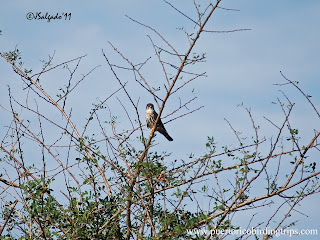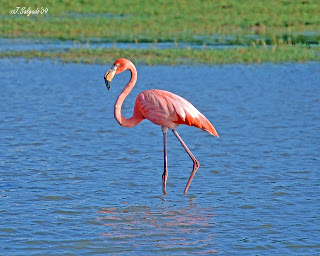
Well today I woke up very early and I went birding for one of my favorite places: “El caño Tiburones”. El Caño Tiburones is one of the biggest estuarine wetlands of Puerto Rico. Its ecological value makes it unique for their size and their hydrological, geological and biotic. A variety of species associated with these systems use the Caño Tiburones as their main habitat. Caño Tiburones Nature Reserve is considered an important area for wildlife. It is home to about 206 bird species, 26 families of insects, reptiles, 6, 9 crustaceans, 21 species of fish, including native animals, endemic, migratory, rare or endangered species and other commercial and recreational importance.
 (Purple Gallinule/ Porphyrio martinica)
(Purple Gallinule/ Porphyrio martinica)
This is one of my favorite places to go bird watching, as I said before. And today I had a good day even though I was only a little while, I saw 37 species of birds and take these pictures I share with you. And also I put the list of birds observed.
List of Bird observeb March 29, 2011
Blue-winged Teal - Anas discors 2
Masked Duck - Nomonyx dominicus 1
Least Grebe - Tachybaptus dominicus 1
Pied-billed Grebe - Podilymbus podiceps 6
Great Blue Heron - Ardea herodias 3
Great Egret - Ardea alba 3
Snowy Egret - Egretta thula 20
Tricolored Heron - Egretta tricolor 1
Cattle Egret - Bubulcus ibis 13
Green Heron - Butorides virescens 3
Osprey - Pandion haliaetus 2
Merlin - Falco columbarius 1
Purple Gallinule - Porphyrio martinica 1
Common Moorhen - Gallinula chloropus 9
American Coot - Fulica americana 5
Killdeer - Charadrius vociferus 2
Black-necked Stilt - Himantopus mexicanus 15
Greater Yellowlegs - Tringa melanoleuca 2
Lesser Yellowlegs - Tringa flavipes 4
Stilt Sandpiper - Calidris himantopus 4
Wilson's Snipe - Gallinago delicata 1
White-winged Dove - Zenaida asiatica 1
Common Ground-Dove - Columbina passerina 2
Monk Parakeet - Myiopsitta monachus 4
Smooth-billed Ani - Crotophaga ani 14
Belted Kingfisher - Megaceryle alcyon 1
Gray Kingbird - Tyrannus dominicensis 11
Caribbean Martin - Progne dominicensis 1
Cave Swallow - Petrochelidon fulva 4
Northern Mockingbird - Mimus polyglottos 3
Bananaquit - Coereba flaveola X
Yellow-faced Grassquit - Tiaris olivaceus 2
Grasshopper Sparrow - Ammodramus savannarum 1
Greater Antillean Grackle - Quiscalus niger 20
Venezuelan Troupial - Icterus icterus 1
Orange-cheeked Waxbill - Estrilda melpoda X
Bronze Mannikin - Spermestes cucullatus 16





